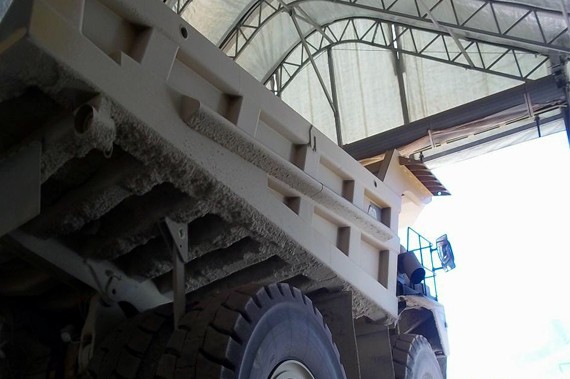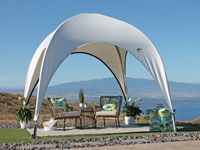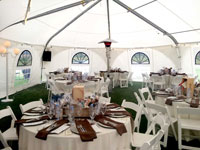A good wash can keep your logging truck and trailer looking good, as well as adding years of life. Left unwashed, corrosion begins wearing down different parts of a truck. As is the same in any wear-and-tear situation, poor maintenance usually results in extra costs for repairs and/or replacements.
For loggers, however, keeping a fleet clean is far more difficult than with trucks in other industries. While a typical permanent brick-and-mortar wash bay may work for keeping a 100-bus fleet regularly cleaned and maintained. But these facilities are a bit out of reach for the backroad — and even off road — hauling that logging operations dictate.
Despite the distance to get these trucks clean and maintained, and the difficulty of the job, it’s still very important for several key reasons.
Temporary Truck Wash Structures
For logging trucks, permanent wash bay stations may be out of reach, or at very least result in a negative hit to work efficiency for the extra travel time and distance. However, temporary wash bays enclosed by engineered fabric structures can provide the portability and versatility logging operations require. When you can’t get the trucks to the wash station, bring the wash station to the trucks.
A similar difficulty exists, and has already been addressed, within the mining industry. Taking the equipment off site to a wash bay is a loss of time and only provides additional overhead from the extra fuel needed. When you have your own wash bay to set up on site and move as needed, that overhead is drastically reduced, and all the time spent in moving the vehicles is saved.
If you’re concerned about unique work site challenges with setting up an enclosed truck wash bay facility, Alaska Structures has been providing custom designed wash bay enclosures for logging companies, transportation, and transit operation facilities since 1975.
Safety and Environmental Benefits
In 2007, Woodson, OR was buried by a debris flow caused by clear cut logging. Thankfully, no one was injured.
How did this happen? In part, it was caused by similar conditions that led to the deadly Oso Washington landslide in 2014. In combination with an already volatile and unsteady hillside, the logging that took place above the town changed the hydrology and infiltration properties, ultimately adding more water to an already unstable slope.
While it’s true that some of these tragedies would still have happened without the impacts of logging, the removal of trees and their soil-stabilizing roots does contribute. Studies have defined specific ways in which logging increases the risk of landslides:
- Larger trees provide strong root structures that anchor soil to the bedrock while penetrating and “pinning together” fragile cracks.
- Old growth trees have large leaf surface areas. This facilitates greater water transfer, as rainwater is drawn up from the roots to the trees’ branches and leaves.
- Forest canopies dissipate rainfall over large areas.
- Heavy logging equipment damages topsoil, decreasing its ability to absorb water.
- Leftover tree limbs (logging slash) blocks natural drainage pathways.
- When large amounts of vegetation is removed, the root systems will soon die. This removes the anchor that held the soil together, and leaves it more prone to over saturation.
While the risks are clear, logging remains a vital industry. Bringing a wash bay onto the work site where there is already an increased probability of soil erosion seems counterintuitive to preventing landslides and other disasters. That is, until you consider that wash bay structures and supplemental structures can collect the used water to prevent it from being distributed to the soil where it may not be properly absorbed or channeled to natural runoff areas.
You can continue to get the job done, keep your equipment clean and well maintained, and avoid adding additional risk factors that could end the operation in addition to risking the surrounding area.
The Alaska Structures Advantage
The majority of what has been said here applies to any fabric structure designed for these purposes. Alaska Structures has five decades of proven experience, assisting our customers by providing custom designed enclosures for wash bay facilities.
In tough environments you need tough equipment. Alaska Structures’ fabric buildings are engineered to last for decades. In addition to this, they are proven to endure prolonged and year-round exposure in extreme temperatures as cold as -80°F (-62.2°C) or as blistering as +130°F (54.4°C). There are very few building systems engineered to withstand such extreme temperatures.
If you are concerned about the types of loading the structures can withstand, keep in mind that engineered fabric structures from Alaska Structures are reliably engineered to meet the wind, snow, and seismic loads for the location of your transportation or logging operations.
To speak with one of our sales representatives about an engineered fabric building from Alaska Structures, call +1-907-344-1565, email us, or contact us online.

















































































Leave a Reply